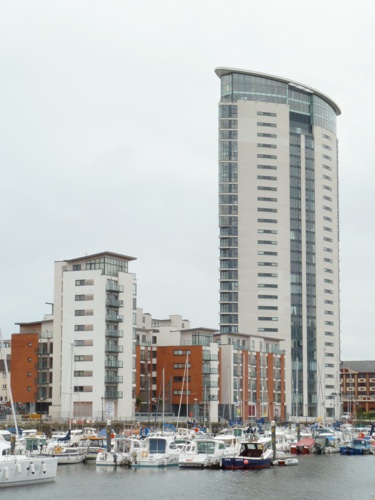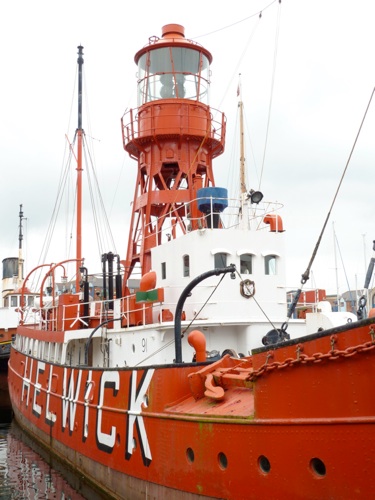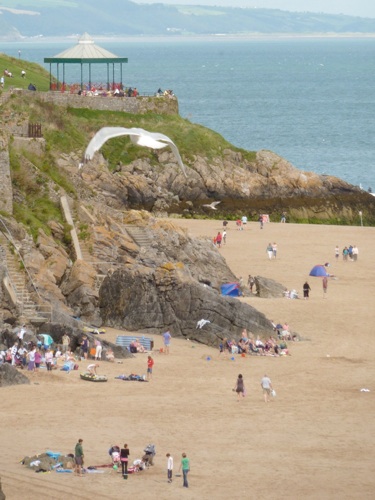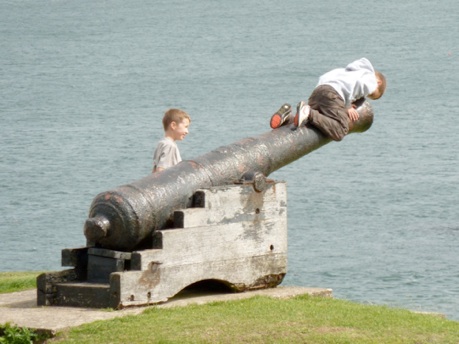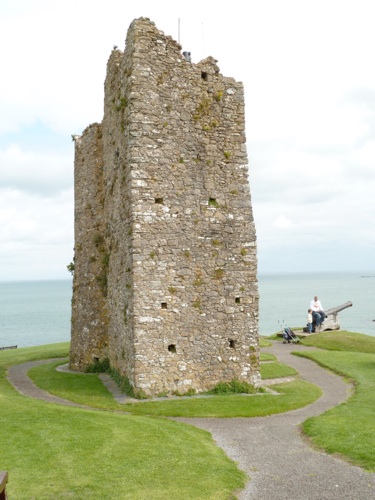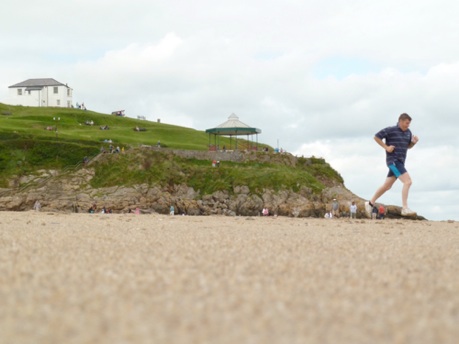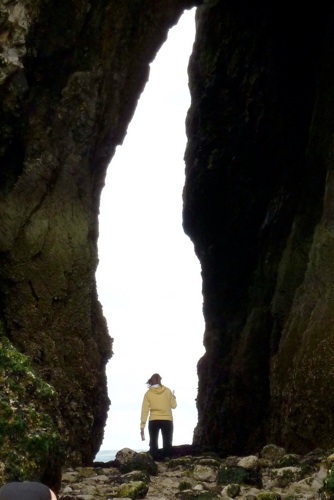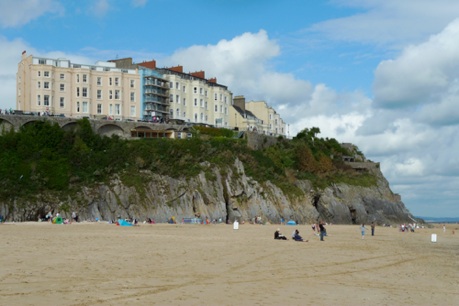
Out early I caught the 7:58 from Cardiff to Swansea and before 9:00 I was walking the streets of this once-thriving port city. Using my guide book and a tourist map I knew my agenda. The National Waterfront Museum described the history of important cities along the southern coast of Wales. It was interesting but more so it was impressive. Not even in D.C. do we have such high-tech interactive displays. In stark contrast next door was the Swansea Museum which was low-tech, bizarre, and eclectic with displays ranging from china plates to electric scooters to … wait for it … an honest to goodness mummy. I was floored and tickled all at once. Later I thoroughly wandered the town but was most affected not by what I saw but with a man I met.
As I walked the waterfront I came across a curious observatory just off the beach. It was in good shape but appeared recently boarded up. After I walked around it having read all its celestial poems-on-plaques a man called out to me “I’s ashame they shu i’ dowen.” Naturally I responded “What?” and that’s when I learned his story, and the story of Swansea.
He was born 70 years ago just a mile from where we spoke. At that time the town was thriving. It exported Welch coal, timber and sand from their important port to destinations worldwide. The port facility handled huge ships, was serviced by several rail systems, and also supported the local steel, slate and wool industries. Life was very, very good and then World War II broke out and everything changed.
The Germans recognized how important Swansea was to the British war effort and they bombed it into oblivion. Gone were the ports. Blown to bits were the rail yards. Devastated were the local industries. The end of the war produced demand for the goods and services of Swansea but the town could not recover before the decline of coal and timber and the off-shoring of steel processing. Not till decades later did the town come back in a new form, as a newly-developed coastal living community, and I have to say it feels all new. Unlike most English town, it doesn’t have a centuries-old character but could be mistaken for a Californian coastal town.
So why was the observatory closed? The borough council had recently decided it didn’t have the funding to maintain the structure. Similarly, the viewing tower which provided an elevated 360 degree view of the town had been closed. More cuts are coming. Times in England are hard.
Using my trusty BritPass I then hopped another train for Tenby, a town which has been a coastal resort for centuries. On the surface this would seem an unlikely claim. However, having spent several hours there I can believe it. Tenby is an innately gorgeous setting with huge beaches, starkly appealing cliffs, near-shore islands, and a peninsula in the middle that is perfectly mounded for a castle. The Normans thought so back in 1100 and remains are still standing atop the hill along with much of village’s wall.
I know I’m smitten with a place of beauty when I walk around and take WAY too many pictures. Some of my favorites are below. In addition to walking the town and the beaches, I walked about 10 miles of the 184-mile Pembrokeshire Coastal Trail. I wanted to be exposed to its character to test if I’d be drawn to it. I was. The cliffs, beaches, and greenery were very appealing. I stopped at the Info Center of the National Park and together we planned a few possible day trips for me. We’ll see.
Back on the train for a 2.5 hour ride back to Cardiff.
I knew it would be a very long day and it was.
It was easily worth the effort.
